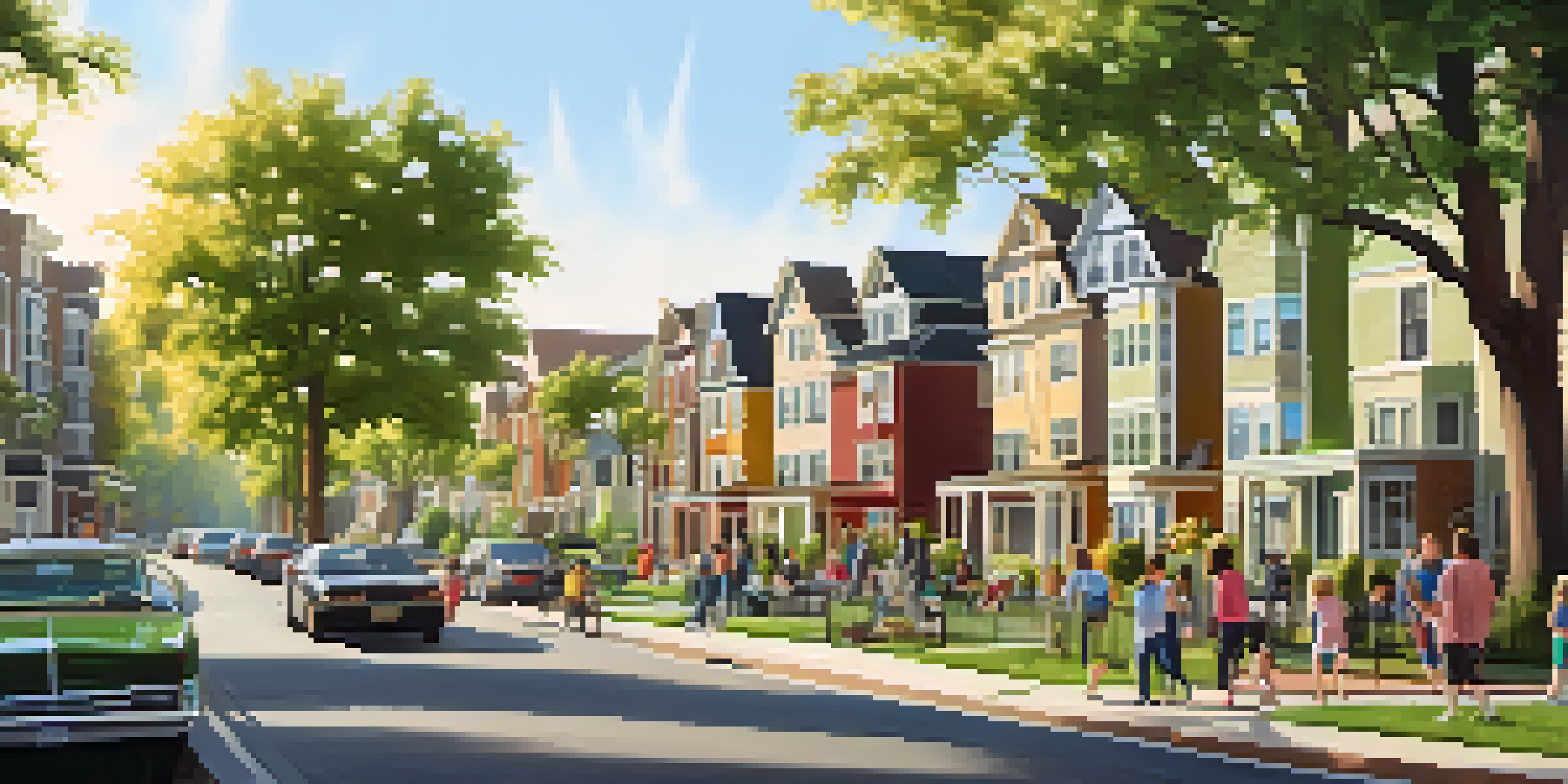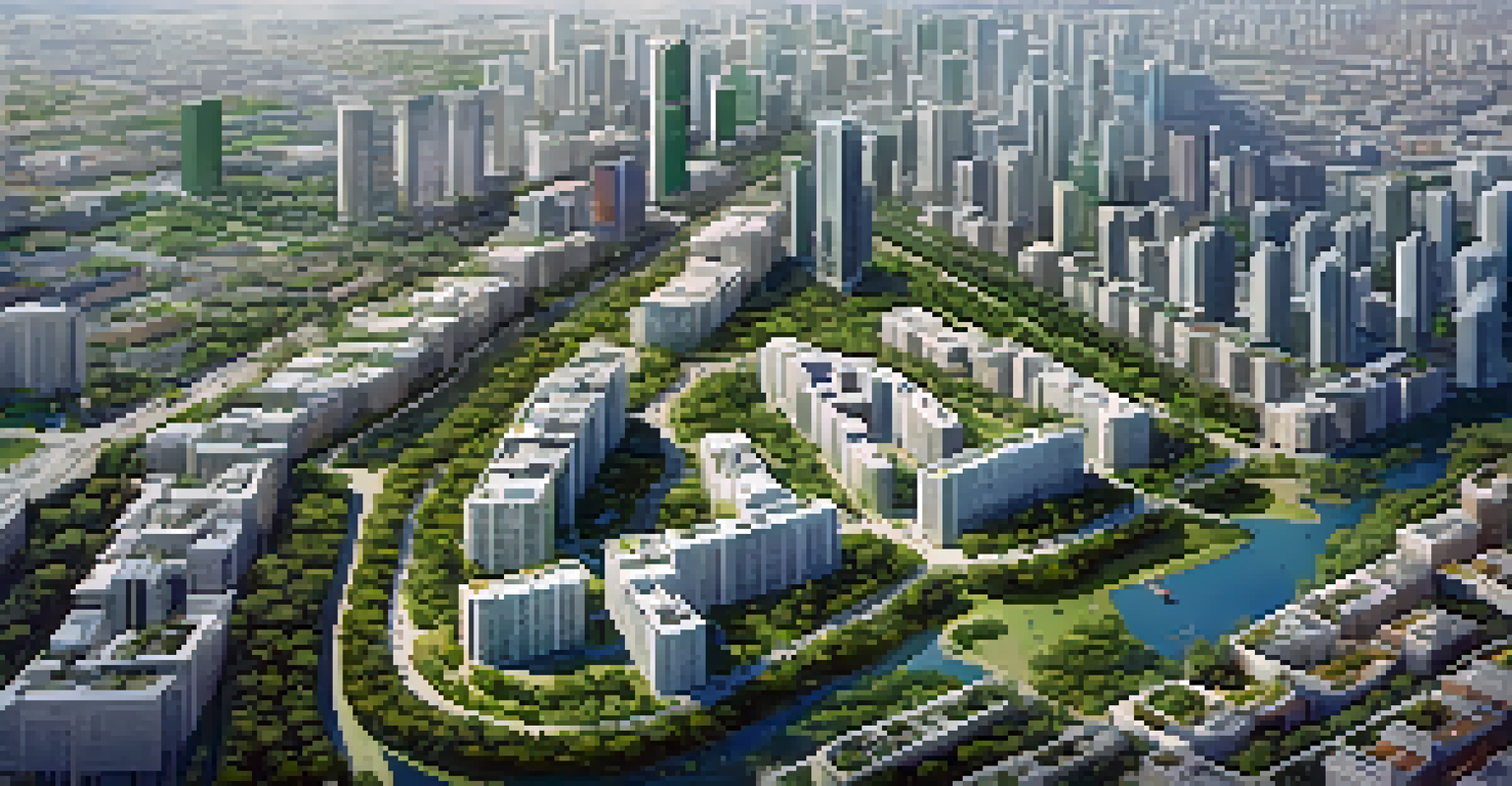Zoning Laws and Their Effect on Housing Affordability

Understanding Zoning Laws and Their Purpose
Zoning laws are regulations set by local governments that dictate how land can be used. They can specify whether an area is designated for residential, commercial, or industrial purposes, essentially shaping the layout of our communities. These laws aim to protect public health, safety, and general welfare, but their effects can extend far beyond these intentions.
Zoning laws should be a tool for promoting community well-being, not a barrier to affordable housing.
For instance, zoning can influence the type of housing that gets built in a neighborhood. Single-family zoning, which restricts properties to only one home per lot, can limit the availability of affordable housing options. As cities grow, these regulations can inadvertently contribute to housing shortages and higher prices, making it essential to examine their impact closely.
Moreover, zoning laws often reflect the community's values and priorities, which can vary significantly from one area to another. While some communities favor preservation and low-density living, others may be more open to mixed-use developments. Understanding these dynamics is crucial for addressing housing affordability.
The Connection Between Zoning and Housing Supply
One of the most significant effects of zoning laws is their impact on housing supply. When zoning regulations are overly restrictive, they can limit the number of homes that can be built, exacerbating the housing crisis in many urban areas. This limited supply leads to increased competition for available properties, driving prices up and making housing less affordable for many.

For example, in cities like San Francisco, strict zoning laws have prevented the construction of new housing units, contributing to skyrocketing rents. As demand continues to outpace supply, the affordability gap widens, leaving many families struggling to find suitable homes. This scenario illustrates how zoning can directly influence the housing market.
Zoning Laws Shape Housing Markets
Zoning laws significantly influence the availability and affordability of housing by dictating land use and development types.
Additionally, the types of housing allowed under zoning laws can restrict options for lower-income families. If zoning predominantly permits high-end developments, it can create an environment where affordable units are scarce. Finding a balance between development and community needs is essential for addressing these challenges.
Zoning Laws and Their Role in Urban Sprawl
Urban sprawl refers to the uncontrolled expansion of urban areas into rural land, often driven by zoning regulations that favor low-density development. These laws can encourage building further away from city centers, leading to longer commutes and increased reliance on cars. This scenario not only affects the environment but also adds to housing costs, as infrastructure needs rise.
The greatest challenge of our time is creating cities that are equitable and accessible for all residents.
For instance, when cities zone for single-family homes on large lots, it can push new developments into suburban areas. While this may create more housing options, it often results in less efficient land use and higher costs for residents. As families move further out, they face the dual burden of higher housing costs and transportation expenses.
The challenge lies in striking a balance between accommodating growth and preserving green spaces. More flexible zoning laws that allow for higher density housing can help curb urban sprawl, making neighborhoods more sustainable and accessible. This shift could alleviate some pressure on housing affordability.
The Impact of Zoning on Gentrification
Gentrification is a phenomenon where lower-income neighborhoods undergo transformation due to an influx of wealthier residents, often triggered by changes in zoning laws. When areas are rezoned to allow for higher-density development, it can attract developers looking to capitalize on rising demand. This often results in new constructions that cater to affluent buyers, displacing long-term residents.
For example, neighborhoods that were once affordable can see their property values soar as new housing options and amenities emerge. While this can improve local infrastructure and services, it often comes at the cost of the very residents who helped build the community. The displacement of these residents raises critical questions about equity and access to housing.
Urban Sprawl Linked to Zoning
Restrictive zoning regulations can contribute to urban sprawl, leading to longer commutes and higher overall housing costs.
To combat gentrification, some cities are exploring inclusionary zoning policies, which require developers to allocate a portion of new units for affordable housing. This approach aims to create a more equitable environment, ensuring that existing residents can remain in their neighborhoods even as they change. It's a delicate balancing act that involves addressing both development needs and community integrity.
Policy Changes to Address Housing Affordability
In light of the challenges posed by zoning laws, many cities are considering policy changes to enhance housing affordability. This may include revising existing zoning regulations to allow for more diverse housing types, such as duplexes or accessory dwelling units (ADUs). By broadening the scope of what can be built, cities can increase their housing stock and provide more options for residents.
Moreover, some municipalities are exploring the concept of 'upzoning,' which involves changing zoning classifications to permit higher-density developments in specific areas. This strategy can help meet the demand for affordable housing while also promoting sustainable urban growth. The goal is to create vibrant, diverse communities that cater to a range of income levels.
Engaging the community in these discussions is crucial. Policymakers need to consider the voices of residents and local stakeholders to ensure that proposed changes reflect the needs and desires of the community. By fostering collaboration, cities can work towards solutions that enhance housing affordability and promote inclusivity.
Community Involvement in Zoning Decisions
Community involvement plays a vital role in shaping zoning laws and their impact on housing affordability. Engaging residents in discussions about land use can lead to more equitable outcomes and ensure that diverse voices are heard. When communities actively participate in these processes, they can advocate for zoning changes that reflect their needs and aspirations.
For instance, public meetings and forums can provide a platform for residents to express their concerns about housing availability and affordability. This feedback can be invaluable for local governments as they consider adjustments to existing zoning regulations. By fostering open dialogue, cities can create a sense of ownership among residents and build trust in the decision-making process.
Community Engagement is Key
Active community involvement in zoning decisions helps ensure that housing policies reflect the needs and aspirations of residents.
Additionally, community engagement can help identify innovative solutions to housing challenges. Grassroots movements often arise in response to housing crises, pushing for policies that prioritize affordability and inclusivity. When communities come together, they can drive meaningful changes in zoning laws and ultimately create a more equitable housing landscape.
Looking Ahead: The Future of Zoning and Housing Affordability
As cities continue to evolve, the relationship between zoning laws and housing affordability remains a pressing concern. The need for affordable housing is more critical than ever, and many urban planners and policymakers are rethinking traditional zoning approaches. The future may involve more flexibility in zoning regulations, allowing for innovative housing solutions that cater to diverse populations.
Emerging trends, such as co-housing and micro-apartments, challenge conventional notions of what affordable housing can look like. By embracing these new models, cities can create more inclusive environments that accommodate various lifestyles and income levels. This shift could be key to addressing the ongoing housing crisis in many urban areas.

Ultimately, a collaborative approach that involves policymakers, developers, and community members will be essential in shaping the future of zoning and housing affordability. By working together, we can create thriving, diverse neighborhoods that provide equitable housing opportunities for all residents.